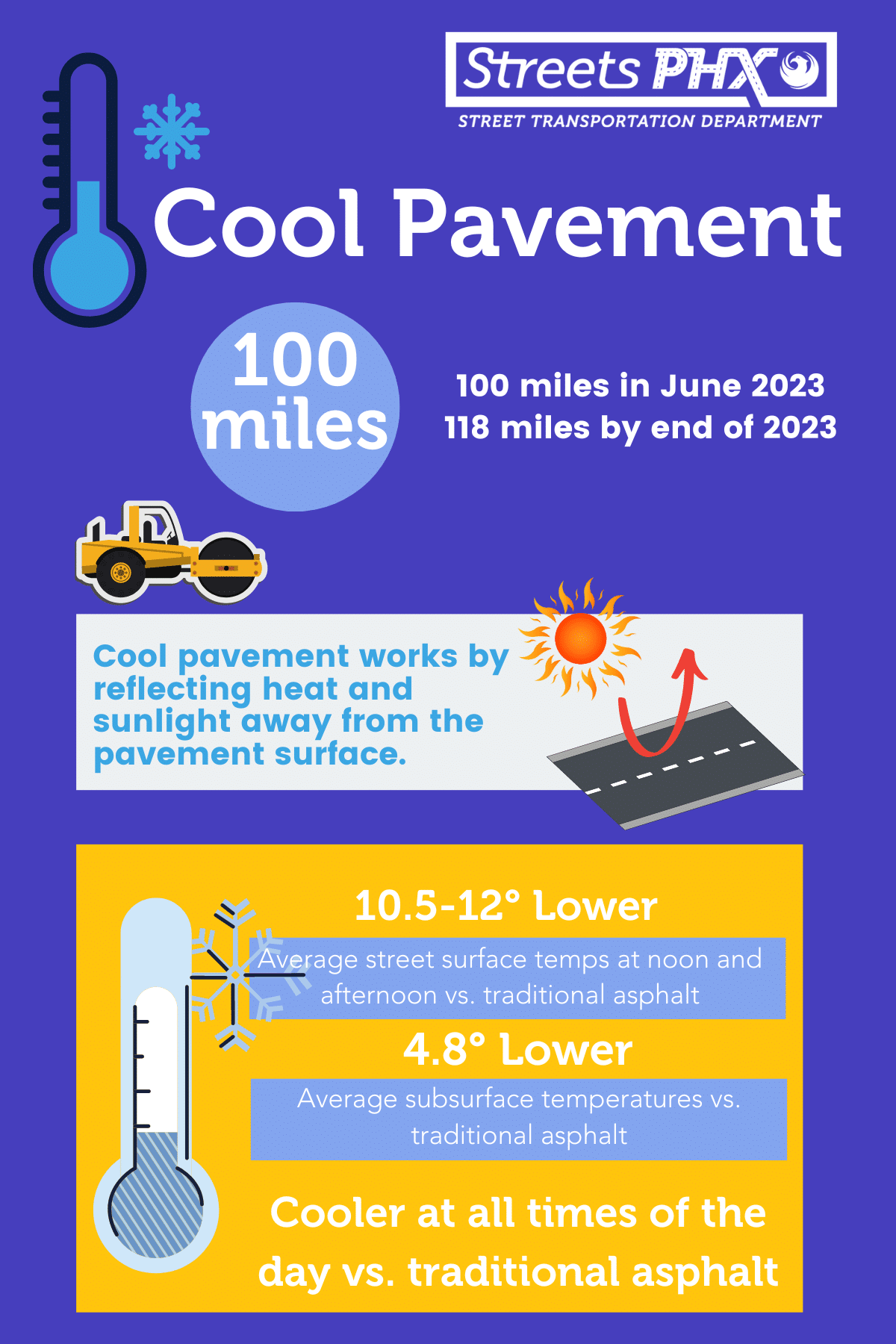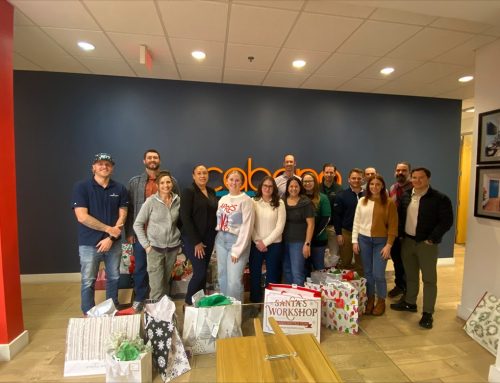Graphic courtesy of city of Phoenix
As temperatures continue to rise, the city of Phoenix and prominent retail spaces are exploring innovative ways to combat the heat. Leading this charge is Desert Ridge Marketplace, which recently unveiled its collaboration with Arizona State University on the “Cool Pavement Project,” aiming to mitigate the heat emanating from concrete and asphalt.
The property owner, Vestar, has committed to layering 63,000 feet of a novel coating, CoolSeal, across the marketplace’s northside roads, sidewalks, and parking areas. Produced by GuardTop, CoolSeal is designed distinctively to reflect sunlight rather than absorbing it, differing fundamentally from traditional asphalt and concrete. Introduced to several Phoenix residential streets back in 2020, streets adorned with this innovative coat recorded temperatures averaging 10.5 to 12 degrees cooler during midday compared to the standard asphalt.
Desert Ridge’s pioneering project grants ASU researchers an unparalleled opportunity to study the effect of CoolSeal in expansive commercial areas. While the research is ongoing, some results are evident. ASU’s data suggests that while humans may experience a slight increase in heat due to surface reflectivity, akin to walking on a typical concrete sidewalk, the overall benefits of cool pavement could be significant in terms of energy conservation, water savings, and potential health outcomes.
Citywide, the adoption of cool pavements is on the rise. The city of Phoenix’s official website indicates that 100 miles of the city’s streets have already incorporated cool pavements, with projections pointing to an increase up to 118 miles by 2023’s end. City officials also attest to the tangible benefits, reporting average surface temperatures on cool pavements being around 10.5 to 12 degrees lower during noontime and the afternoons.
However, as with any nascent technology, more comprehensive research is still needed. While the immediate benefits are clear in terms of temperature regulation, a full understanding of potential consequences and best use scenarios remains a topic of study.
The success of the Desert Ridge Marketplace initiative could be a bellwether for more extensive application. Vestar has already hinted at potentially expanding the CoolSeal technology to other “heat vulnerable” properties in its expansive portfolio, which includes 21 retail properties in Arizona and 30 million square feet of property across the western U.S.
As Phoenix and its surrounding areas continue to grapple with increasing temperatures, initiatives like the Cool Pavement Project could pave the way for a more sustainable, cooler future for the Valley.





